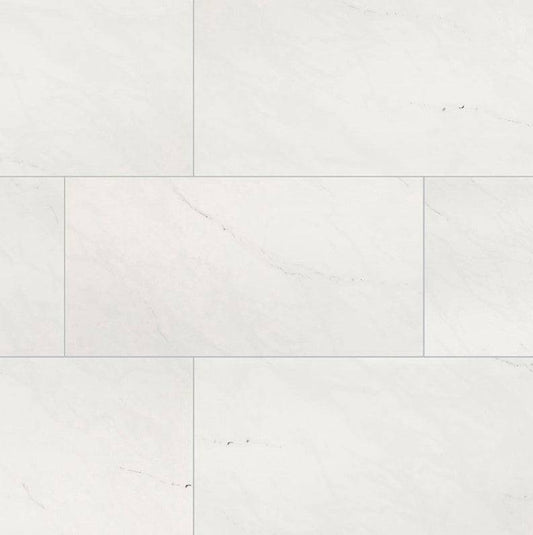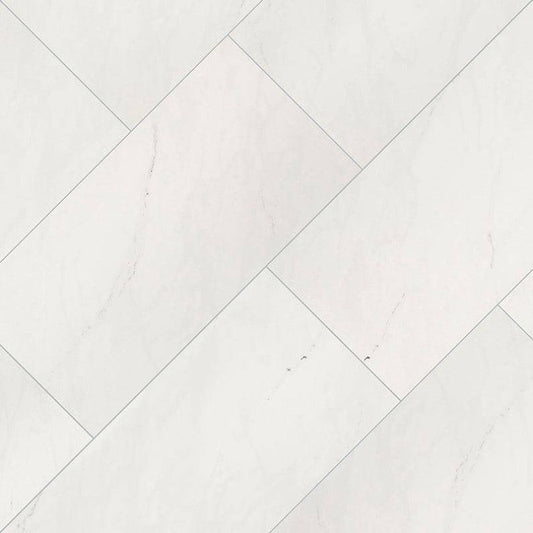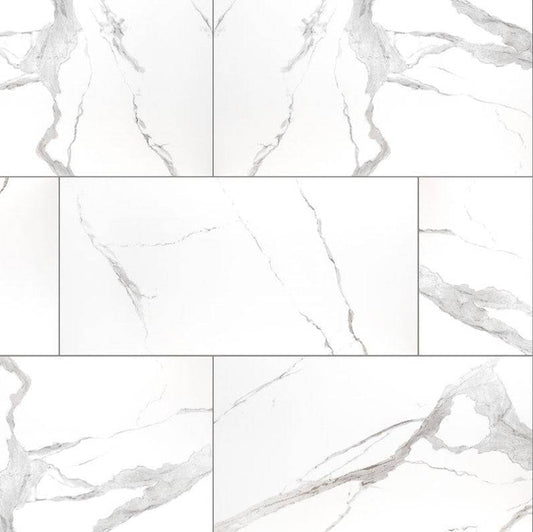-
Renoz Casa Satuario Grey Porcelain Tile
Vendor:Renoz/ sq.ft. / sq.ft.Regular price $47.84 / box ( sq. ft. / box )Regular price $47.84 / box ( sq. ft. / box)Unit price per$75.00 CADSale price60% Off -
MSI Eden Statuary Polished Porcelain Tile...
Vendor:MSI/ sq.ft. / sq.ft.Regular price $88.00 / box ( sq. ft. / box )Regular price $88.00 / box ( sq. ft. / box)Unit price per$100.00 CADSale price12% Off -
MSI Eden Dolomite Porcelain Tile Polished...
Vendor:MSI/ sq.ft. / sq.ft.Regular price $69.64 / box ( sq. ft. / box )Regular price $69.64 / box ( sq. ft. / box)Unit price per$135.29 CADSale price48% Off -
MSI Calacatta Lucca Porcelain Tile Polished...
Vendor:MSI/ sq.ft. / sq.ft.Regular price $63.32 / box ( sq. ft. / box )Regular price $63.32 / box ( sq. ft. / box)Unit price per$101.54 CADSale price37% Off -
MSI Dymo Statuary Ceramic Wall Tile...
Vendor:MSI/ sq.ft. / sq.ft.Regular price $63.75 / box ( sq. ft. / box )Regular price $63.75 / box ( sq. ft. / box)Unit price per$73.31 CADSale price13% Off -
MSI Aria Ice Polished Porcelain Tile...
Vendor:MSI/ sq.ft. / sq.ft.Regular price $69.64 / box ( sq. ft. / box )Regular price $69.64 / box ( sq. ft. / box)Unit price per$88.67 CADSale price21% Off -
MSI Absolute India Black Granite Polished...
Vendor:MSI/ sq.ft. / sq.ft.Regular price $87.25 / box ( sq. ft. / box )Regular price $87.25 / box ( sq. ft. / box)Unit price per$100.34 CADSale price13% Off -
MSI Flooring Porcelain Tile Calacatta Venato...
Vendor:MSI/ sq.ft. / sq.ft.Regular price $59.80 / box ( sq. ft. / box )Regular price $59.80 / box ( sq. ft. / box)Unit price per$68.78 CADSale price13% Off -

 22% Off
22% OffMSI Aria Ice Porcelain Tile
Vendor:MSI/ sq.ft. / sq.ft.Regular price $74.00 / box ( sq. ft. / box )Regular price $74.00 / box ( sq. ft. / box)Unit price per$94.18 CADSale price21% Off -
MSI Pietra Calacatta Bullnose Porcelain Tile...
Vendor:MSI/ sq.ft. / sq.ft.Regular price $161.94 / box ( sq. ft. / box )Regular price $161.94 / box ( sq. ft. / box)Unit price per$346.00 CADSale price53% Off -
MSI Sande Grey Matte Porcelain Tile...
Vendor:MSI/ sq.ft. / sq.ft.Regular price $64.99 / box ( sq. ft. / box )Regular price $64.99 / box ( sq. ft. / box)Unit price per$72.41 CADSale price10% Off -
MSI Kenzzi Zoudia Matte Porcelain Tile...
Vendor:MSI/ sq.ft. / sq.ft.Regular price $45.92 / box ( sq. ft. / box )Regular price $45.92 / box ( sq. ft. / box)Unit price per$52.81 CADSale price13% Off -
MSI Onda Gray Porcelain Tile 12"...
Vendor:MSI/ sq.ft. / sq.ft.Regular price $59.80 / box ( sq. ft. / box )Regular price $59.80 / box ( sq. ft. / box)Unit price per$68.78 CADSale price13% Off -
MSI Flooring Porcelain Tile Calacatta Venato...
Vendor:MSI/ sq.ft. / sq.ft.Regular price $63.32 / box ( sq. ft. / box )Regular price $63.32 / box ( sq. ft. / box)Unit price per$101.54 CADSale price37% Off -
MSI Palmetto Cognac Wood Look Porcelain...
Vendor:MSI/ sq.ft. / sq.ft.Regular price $78.97 / box ( sq. ft. / box )Regular price $78.97 / box ( sq. ft. / box)Unit price per$90.81 CADSale price13% Off -
MSI Backsplash and Wall Tile White...
Vendor:MSI/ sq.ft. / sq.ft.Regular price $147.37 / box ( sq. ft. / box )Regular price $147.37 / box ( sq. ft. / box)Unit price per$169.48 CADSale price13% Off -
MSI Backsplash and Wall Tile Renzo...
Vendor:MSI/ sq.ft. / sq.ft.Regular price $131.03 / box ( sq. ft. / box )Regular price $131.03 / box ( sq. ft. / box)Unit price per$150.69 CADSale price13% Off -
MSI Backsplash and Wall Tile Montauk...
Vendor:MSI/ sq.ft. / sq.ft.Regular price $28.49 / box ( sq. ft. / box )Regular price $28.49 / box ( sq. ft. / box)Unit price per$32.76 CADSale price13% Off -
MSI Antoni Nero Matte Porcelain Wood...
Vendor:MSI/ sq.ft. / sq.ft.Regular price $58.48 / box ( sq. ft. / box )Regular price $58.48 / box ( sq. ft. / box)Unit price per$67.25 CADSale price13% Off -
MSI Abatec Underlayment for Rigid Click...
Vendor:MSI/ sq.ft. / sq.ft.Regular price $101.46 / box ( sq. ft. / box )Regular price $101.46 / box ( sq. ft. / box)Unit price per$116.68 CADSale price13% Off -
MSI Doverton Gray Clay Brick Tile...
Vendor:MSI/ sq.ft. / sq.ft.Regular price $106.84 / box ( sq. ft. / box )Regular price $106.84 / box ( sq. ft. / box)Unit price per$133.55 CADSale price20% Off -
MSI Rockmount Golden Honey Panel 6x24
Vendor:MSI/ sq.ft. / sq.ft.Regular price $53.02 / box ( sq. ft. / box )Regular price $53.02 / box ( sq. ft. / box)Unit price per$63.94 CADSale price17% Off -
MSI Miraggio Gold 24 x 48...
Vendor:MSI/ sq.ft. / sq.ft.Regular price $94.82 / box ( sq. ft. / box )Regular price $94.82 / box ( sq. ft. / box)Unit price per$118.52 CADSale price19% Off -
MSI Blue Pearl Silver Granite Polished...
Vendor:MSI/ sq.ft. / sq.ft.Regular price $182.78 / box ( sq. ft. / box )Regular price $182.78 / box ( sq. ft. / box)Unit price per$210.20 CADSale price13% Off
Tiles
Common questions about Tiles
Best Tile for showers?
The best tile options for shower walls include ceramic, porcelain, glass, natural stone, and porcelain mosaic. Ceramic and porcelain are durable and water-resistant. Glass tiles provide a modern look and reflect light. Natural stone tiles add an elegant touch but require sealing. Porcelain mosaic tiles offer creative design options. Consider your preferences, budget, and desired style when choosing. Consult a professional for specific recommendations.
The best tile for a shower floor is typically a smaller mosaic tile with a slip-resistant surface. This helps provide better traction and reduces the risk of slipping in the shower. Additionally, it's important to choose a tile that is water-resistant and easy to clean for the shower floor.
Here's a simple list of the best tile options for a kitchen:
- Porcelain Tiles
- Ceramic Tiles
- Natural Stone Tiles (e.g., granite, marble)
- Vinyl Tiles
- Cork Tiles
Each option has its own advantages, so consider factors such as durability, maintenance, style, and budget when making your decision.
The best tiles for a backsplash in the kitchen depend on personal style preferences and the overall design aesthetic. However, here are some popular tile options:
-
Ceramic Tiles: Ceramic tiles are a common choice for kitchen backsplashes. They come in various colors, patterns, and finishes, allowing for a wide range of design possibilities. Ceramic tiles are durable, easy to clean, and relatively affordable.
-
Subway Tiles: Subway tiles are a classic and versatile option for backsplashes. They are rectangular in shape and often come in a glossy or matte finish. Subway tiles can create a clean and timeless look in the kitchen.
-
Glass Tiles: Glass tiles can add a sleek and modern touch to a kitchen backsplash. They come in a variety of colors, shapes, and sizes. Glass tiles reflect light and can create a vibrant and reflective surface.
-
Mosaic Tiles: Mosaic tiles offer endless design possibilities for backsplashes. They come in various materials such as glass, ceramic, or natural stone. Mosaic tiles can be arranged in intricate patterns, adding visual interest and texture to the backsplash.
-
Natural Stone Tiles: Natural stone tiles, such as marble, travertine, or slate, can bring a sense of luxury and elegance to a kitchen backsplash. Each piece of natural stone has unique variations in color and pattern, adding a natural and timeless look.
Consider the overall style of your kitchen, color scheme, and the desired visual impact when selecting the best tiles for your backsplash. It's also a good idea to gather samples and visualize how the tiles will complement the other elements in your kitchen before making a final decision.
Here's a simplified list outlining the process of how tiles are made:
-
Raw Materials: The production of tiles starts with sourcing raw materials such as clay, silica, feldspar, and other minerals. These materials are chosen based on the desired properties of the final tile.
-
Mixing: The raw materials are thoroughly mixed to create a homogenous mixture. Water may be added to achieve the desired consistency. This mixture is known as the "slip" or "slurry."
-
Shaping: The slip is poured into molds or passed through a machine to shape it into individual tiles. The shaping method depends on the type and design of the tile, such as pressing, extrusion, or casting.
-
Drying: The shaped tiles are then dried to remove excess moisture. This can be done by air-drying or using kilns or drying chambers. Proper drying is crucial to prevent warping or cracking during the firing process.
-
Firing: The dried tiles are fired in kilns at high temperatures. This process, known as firing or sintering, helps to harden the tiles and give them their final strength and durability. The firing temperature and duration depend on the type of tile being produced.
-
Glazing (optional): If a glazed tile is desired, a layer of liquid glaze is applied to the surface of the tile. Glazes can provide various colors, finishes, and protective coatings. The glazed tiles are then fired again to fuse the glaze onto the tile.
-
Quality Control: Throughout the production process, quality control checks are performed to ensure the tiles meet the desired standards. This includes checking for imperfections, measuring dimensions, and assessing the overall quality.
-
Packaging and Distribution: Once the tiles have passed quality control, they are packaged and prepared for distribution. They are typically packed in boxes or pallets to protect them during transportation.
It's important to note that this is a simplified overview, and the tile manufacturing process can vary depending on the type of tile and the manufacturer.
Is Stone Tile More Expensive?
Here are bullet points summarizing the information:
- Stone tile is generally more expensive compared to other flooring materials.
- The cost of stone tile can vary based on factors such as the type of stone, quality, rarity, and supplier.
- Premium natural stones like marble, granite, and travertine are typically priced higher than other options.
- Slate, limestone, and engineered stone tiles can provide more affordable alternatives within the stone tile category.
- Besides the cost of the tiles, consider additional expenses like labor, adhesive, grout, sealants, and installation materials.
- Stone tile offers durability, timeless beauty, and a unique aesthetic appeal.
- Consider your budget, the specific type of stone, and long-term preferences before investing in stone tile.
Remember to conduct thorough research, obtain quotes from multiple suppliers, and consult with professionals to get accurate pricing information based on your specific project requirements.
What do You put under your Tile?
When installing tile, there are several common materials that are typically placed under the tile to provide a suitable base or substrate. These materials help to ensure proper support, stability, and longevity of the tile installation. Here are some examples:
-
Cement Backer Board: Cement backer board, such as cementitious boards like HardieBacker or WonderBoard, is a popular choice. It is moisture-resistant, rigid, and provides a stable surface for tile installation.
-
Uncoupling Membrane: Uncoupling membranes, like Schluter-DITRA or Laticrete Stratamat, are thin, flexible sheets that provide a decoupling layer between the tile and the subfloor. They help to prevent cracks and movement in the tile caused by substrate movement.
-
Plywood or OSB Subfloor: In some cases, a plywood or oriented strand board (OSB) subfloor may be used as the base for tile installation. However, it is important to ensure that the subfloor is adequately prepared and meets the necessary requirements for tile installation, including proper thickness and structural integrity.
-
Mortar or Thinset: A layer of mortar or thinset is typically applied directly onto the substrate or backer board before placing the tiles. This serves as the adhesive that bonds the tiles to the substrate.
The specific choice of underlayment material depends on factors such as the type of tile, the substrate condition, moisture levels, and the specific requirements of the tile manufacturer. It is crucial to follow the manufacturer's recommendations and consult with a professional installer for proper installation techniques and materials for your specific tile project.
What Tile lasts the longest?
Porcelain tiles are known to last the longest among different types of floor tiles due to their exceptional durability and resistance to wear, stains, and impacts.
| Type of Floor Tile | Durability |
|---|---|
| Porcelain | Excellent |
| Natural Stone (e.g., marble, granite) | Excellent |
| Ceramic | Good |
| Vinyl | Good |
| Laminate | Moderate |
| Cork | Moderate |
| Glass | Moderate |
| Terrazzo | Moderate to Excellent (depending on quality) |
| Concrete | Excellent |
| Wood | Moderate to Excellent (depending on species and finish) |
Please note that this is a general comparison, and the actual durability of each type of tile can vary depending on factors such as quality, thickness, installation, maintenance, and specific usage conditions. It's always recommended to consider individual product specifications and consult with manufacturers or experts for more detailed information on the durability of specific tile options.
Which color tiles are best? short answer
Some popular tile colors include:
-
Neutral colors: Neutral tones such as white, beige, gray, and taupe are timeless and versatile choices. They provide a clean and elegant look that can complement various design styles.
-
Earthy tones: Warm earthy colors like brown, tan, and terracotta create a cozy and inviting ambiance. They work well in rustic, Mediterranean, or natural-themed spaces.
-
Cool blues and greens: These colors evoke a sense of calmness and tranquility. Light blues and soft greens can be used to create a refreshing and soothing atmosphere, especially in bathrooms or coastal-inspired designs.
-
Bold and vibrant hues: Some homeowners opt for bold and vibrant tile colors to make a statement. This can include rich blues, deep reds, vibrant yellows, or even black tiles, adding a dramatic and modern touch to the space.
-
Timeless black and white: Classic black and white tiles have enduring popularity. They offer a timeless and sophisticated look, allowing for various design possibilities, from retro to contemporary.
Ultimately, the choice of tile color depends on personal style preferences, the overall design concept, and the desired mood or atmosphere of the space. It's recommended to consider the existing decor, lighting, and the intended visual impact when selecting tile colors.
Some disadvantages of ceramic tiles include:
-
Susceptibility to cracks: Ceramic tiles can be prone to cracking if a heavy object is dropped on them or if there is significant impact or stress applied to them.
-
Coldness: Ceramic tiles can feel cold underfoot, particularly in colder climates or during winter seasons. This can be uncomfortable for some individuals, especially in areas where bare feet are common.
-
Hardness: While the hardness of ceramic tiles contributes to their durability, it can also make them less forgiving on the feet and joints, especially when standing or walking for extended periods.
-
Slipperiness: Some ceramic tiles, especially those with a smooth and glossy finish, can be slippery when wet. This can pose a risk of slipping and falling, particularly in areas prone to moisture such as bathrooms or entryways.
-
Grout maintenance: The grout lines between ceramic tiles require regular cleaning and maintenance to prevent staining, discoloration, or the growth of mold and mildew.
-
Installation complexity: Proper installation of ceramic tiles requires skill and precision to ensure a level and uniform surface. Improper installation can lead to issues such as uneven tiles or grout lines.
It's important to note that these disadvantages may vary depending on the specific type and quality of ceramic tiles, as well as the installation and maintenance practices employed.
What floor tile is easiest to maintain?
Porcelain tiles are generally considered the easiest to maintain among different types of floor tiles. Here are a few reasons why:
-
Stain-resistant: Porcelain tiles have a low porosity, making them highly resistant to stains. Spills and messes can be easily wiped away without leaving lasting marks.
-
Easy to clean: Porcelain tiles are smooth and non-porous, allowing for easy cleaning. Regular sweeping or vacuuming, followed by mopping with a mild detergent solution, is usually sufficient to keep them clean.
-
Durability: Porcelain tiles are known for their exceptional durability, making them resistant to scratches, impacts, and wear. This means they can withstand heavy foot traffic and maintain their appearance for a long time.
-
Low maintenance grout options: Choosing rectified or narrow grout lines can minimize grout maintenance, as smaller grout lines are easier to clean and less prone to staining.
-
Resistance to moisture and chemicals: Porcelain tiles are highly resistant to moisture, making them suitable for areas with high humidity, such as bathrooms or kitchens. They are also resistant to chemicals, which simplifies cleaning with common household cleaning products.
While porcelain tiles are easier to maintain, it's still important to promptly clean up spills, avoid using harsh abrasives or acidic cleaners, and follow any specific maintenance recommendations from the tile manufacturer for optimal care.
Can you tile without grout?
While it is technically possible to install tiles without grout, it is not recommended. Grout serves several important purposes in tile installation:
-
Stability: Grout helps to stabilize the tiles, keeping them in place and preventing movement or shifting.
-
Alignment: Grout lines create consistent spacing between tiles, ensuring a straight and uniform appearance.
-
Protection: Grout fills the gaps between tiles, preventing moisture and debris from seeping in. It helps to protect the tile edges from chipping or cracking and provides a barrier against water damage.
-
Cleanliness: Grout makes it easier to clean the tiled surface by preventing dirt, stains, and bacteria from accumulating in the gaps.
Without grout, tiles are more susceptible to damage, shifting, and moisture-related issues. Additionally, the absence of grout lines may result in an uneven and unattractive installation.
However, there are tile products available, such as large-format tiles or rectified tiles, that can be installed with minimal grout lines or narrower grout joints. This can create a more seamless and uniform look while still maintaining the necessary stability and protection.
It's always best to consult with a professional tile installer or follow the manufacturer's guidelines for proper tile installation, including the use of grout.
What are the three types of tiles?
Tiles can refer to various objects, but if you're referring to types of tiles commonly used in construction and interior design, here are three common types:
-
Ceramic Tiles: Ceramic tiles are made from clay that is fired at high temperatures. They are known for their durability and versatility. Ceramic tiles come in various colors, sizes, and patterns, making them suitable for both floors and walls in different areas of a building.
-
Porcelain Tiles: Porcelain tiles are a type of ceramic tile that is denser and more resistant to water and stains. They are manufactured using finer clays and fired at higher temperatures. Porcelain tiles are often used in areas that require high durability, such as kitchens, bathrooms, and outdoor spaces.
-
Natural Stone Tiles: Natural stone tiles are made from quarried stone, such as marble, granite, slate, limestone, or travertine. These tiles offer unique and natural patterns, textures, and colors. They are popular for creating a luxurious and timeless look in various applications, including floors, walls, countertops, and backsplashes
What type of tiles are the Best?
It's worth noting that there are many other types of tiles available, including glass tiles, mosaic tiles, vinyl tiles, and more, each with its own characteristics and suitable applications.
Porcelain tiles are generally considered to be of the highest quality due to their durability and resistance to water, stains, and scratches.









































